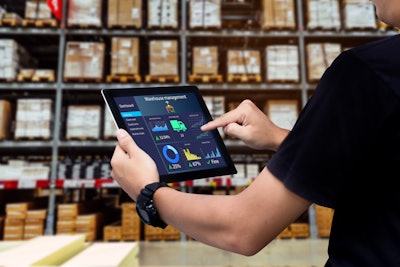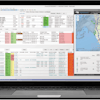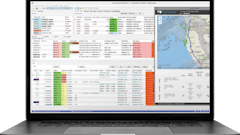
We agree that business decisions need to be fact-based and rational. However, that’s not always possible as we operate in uncertain and time-constrained environments where economic scenarios can change drastically, leaving businesses clueless on remedial actions with no context of similar past experiences. Supply chains of the future have to be shorter, focused, and agile. They need to be intuitive to allow instant decision-making, without much awareness, and intelligent to analyze past data to make calculated decisions for long-term stability and growth.
Intuition vs intelligence in modern supply chains
While intuition is reflex implementation to rebalance the system and rebuild efficiencies, intelligence is deductive reasoning using modern technologies to optimize the supply chains by analyzing data for business scalability.
Deductive reasoning is challenged when there is difficulty in identifying facts, or linking cause & effect. By the time a rational decision is made, the environment has evolved further, making it hard for businesses to adapt. Therefore, instead of conducting a detailed analysis on a daily basis, we need to make intuitive day-to-day decisions by adapting constantly to the changing environment and increasing the frequency of review to make sure an imperfect short-term decision is quickly readjusted to have a favorable long-term impact.
Modern intuitive and intelligent WMS to boost business performance and ROI
New-age WMS has the ability to analyze & react quickly to the changing market scenarios with simple-to-understand and easy-to-operate processes.
- A single view of 100% inventory allows full control. Complete stock visibility helps in better planning & buying of new stock, based on current demands, and accurate distribution of the in-hand stock for greater sales.
- Real-time inventory-order sync facilitates accurate inventory management and order fulfillment. Storing 100% of product information on barcodes and QR codes simplifies inventory updates on sales channels and prevents the booking of excess orders. Good quality returns can also go live immediately to avoid piling up. Real-time inventory update also prevents the need for regular audits.
- Easy business scalability with user-friendly UX/UI helps in faster training of the workforce to allow quick ramp-up of operations when required. Businesses can manage manpower costs by reducing dependency on skilled labor and hiring independent workers according to requirements.
- Multi-user access and customizable dashboards to support instant analysis at multiple stakeholder levels. Supply chains cannot be optimized in silos. A centralized view of data at the warehouse, company, and supply chain level prevents risks that may arise due to incomplete visibility.
- Tracking human errors with inventory serialization and barcoding is a huge problem-solver in boosting warehouse efficiency and pinpointing sources of errors. Serialization captures the action on individual pieces of inventory and helps improve employee performance by identifying loopholes. Monitoring performance offers notable gains in productivity and quality of service, which ultimately results in enhanced workflow and improved profit margins.
Intelligent warehousing helps in calculated long-term decision-making to save costs, increase profitability, improve speed to customers and get ahead of the competition.
- Big data analytics and algorithm-driven solutions can be used to influence product decisions at a more granular level. The use of advanced analytics for assortment planning, deciding inventory distribution, and optimum space utilization, prevent unnecessary expenditure of time and energy in inventory relocation.
- Automation of mundane manual processes using intelligent technologies such as Digital Process Automation (DPA) and Robotic Process Automation (RPA) improves order fulfillment accuracy and streamlines operations. Repeated activities like picking, packing, labeling, etc. can be accelerated with automated picklist generations and optimized pick path suggestions, considering LIFO, FIFO & FEFO methods, to ensure performance maximization.
- Cloud computing and the use of wireless devices allow better connectivity and communication within the warehouse. Bluetooth scanners, barcode scanners, and handheld devices enable a smooth exchange of information between terminals. It integrates systems and provides a repository of data for informed decision-making.
- Omnichannel warehousing for multichannel customers maximizes order fulfillment in minimum delivery time. Smart WMS has the capability to accept orders from multiple, B2B & B2C, sales channels and facilitate easy order routing and splitting for faster order fulfillment.
- Sustainable warehousing with the paper-less, pen-less, keyboard-less operation for zero human errors or delays. Implementing technologies like barcode scanners and RFID tags lower operating costs, in the long run, allowing 100% product traceability within the warehouse and preventing unnecessary resource utilization or wastage.
As the future becomes unpredictable, businesses need to ensure the best warehouse management practices are integrating compliance for effective & risk-averse operations. Systems need to be agile and streamlined with increased data intelligence in demand planning and automated decision-making. Intuitive decisions should be revisited regularly to ensure they are in sync with the long-term vision of the business. After all, a roughly right decision in the short term is better than a highly calculated delayed decision in the long term.

![Pros To Know 2026 [color]](https://img.sdcexec.com/mindful/acbm/workspaces/default/uploads/2025/08/prostoknow-2026-color.mduFvhpgMk.png?auto=format%2Ccompress&bg=fff&fill-color=fff&fit=fill&h=100&q=70&w=100)







![Pros To Know 2026 [color]](https://img.sdcexec.com/mindful/acbm/workspaces/default/uploads/2025/08/prostoknow-2026-color.mduFvhpgMk.png?ar=16%3A9&auto=format%2Ccompress&bg=fff&fill-color=fff&fit=fill&h=135&q=70&w=240)








